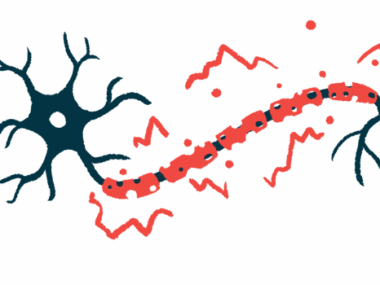More, earlier damage seen in primary progressive MS vs SPMS
But new study finds substantial overlap between the 2 MS types
Written by |

People with primary progressive multiple sclerosis (MS) may experience more severe inflammatory activity and nerve damage early on in the course of their disease as compared with individuals who have secondary progressive MS, a new study indicates.
The results also suggest that primary progressive MS patients tend to have higher levels of the heavy metal copper and lower levels of vitamin C around their brain.
“The efficiency and efficacy of … vitamin C supplementation on MS may need to be investigated,” the researchers wrote.
Overall, the scientists stated that their “observations suggest that while [secondary progressive] MS is a metabolically active disease that progresses gradually over a longer period of time, the pathological [disease-causing] insults induced in [primary progressive] MS are rather more intense at the beginning, causing severe disability within a relatively short period.”
The study, “Multifaceted Analysis of Cerebrospinal Fluid and Serum from Progressive Multiple Sclerosis Patients: Potential Role of Vitamin C and Metal Ion Imbalance in the Divergence of Primary Progressive Multiple Sclerosis and Secondary Progressive Multiple Sclerosis,” was published in the Journal of Proteome Research.
Study finds more similarities than differences in MS types
Progressive forms of MS are characterized by symptoms that get gradually worse as time goes on, even if the individual is not having any relapses, or episodes where symptoms suddenly worsen.
There are two progressive types of MS: primary progressive MS (PPMS), in which patients experience a progressive disease course from the start of the disorder, and secondary progressive MS (SPMS), where progressive disease starts affecting someone who previously had relapsing-remitting MS.
Little is known, however, about how biological processes differ between SPMS and PPMS.
To learn more, scientists in Spain performed detailed biochemical analyses on samples from 18 people with PPMS, 22 with SPMS, and 13 individuals without MS, who served as controls. All three groups were comparable in terms of age and sex, with the majority of participants being women. Among the MS patients, those with SPMS tended to have a longer disease duration and more severe disability compared with those with PPMS.
All of the participants in the study provided samples of blood and cerebrospinal fluid (CSF), which is the liquid that surrounds the brain and spinal cord.
The results showed that levels of a variety of molecules were abnormal in samples from MS patients compared with the controls, but the differences were generally much more pronounced in CSF samples compared with blood samples. This result was expected given that MS is a disorder that mainly affects the brain and spinal cord.
Although many molecules showed statistically significant differences in levels between MS patients and people without the disorder, there were substantially fewer differences between SPMS and PPMS patients in either CSF or blood analyses. In fact, for most of the molecules analyzed, there was substantial overlap between the two MS types.
“The evidence … buttresses the idea that both PPMS and SPMS are different presentations of the same disease with similar metabolic alterations,” the researchers wrote.
The team also noted that levels of ascorbate, better known as vitamin C, were significantly lower in CSF from PPMS patients compared with SPMS patients or controls without the disease. Vitamin C is an antioxidant, and the researchers speculated that lower levels may make the nervous system more vulnerable to damage in PPMS.
“Investigating the factors that promote [higher amounts of vitamin C in the brain] could have therapeutic or preventive potential against MS,” they wrote.
The evidence … buttresses the idea that both PPMS and SPMS are different presentations of the same disease with similar metabolic alterations.
In general, the researchers said that most of the molecules that were elevated in MS patients compared with controls tended to be higher in patients with SPMS than PPMS. Because SPMS patients tended to have much longer disease duration, the scientists speculated that these molecular changes could represent the accumulating effects of damage in the nervous system.
A few molecules that were higher in MS patients than controls tended to be higher in PPMS than SPMS, including a marker of inflammation called YKL-40, a marker of nerve damage known as neurofilament light chain (NfL), and the heavy metal lead.
The higher levels of nerve damage and inflammatory markers in PPMS may suggest that these patients may have more severe inflammatory damage early on in their disease course compared with SPMS patients, the scientists said.
“Although there were no significant differences between SPMS and PPMS in relation to the concentrations of both NFL and YKL-40, the average concentrations of both biomarkers were marginally higher in PPMS compared to SPMS,” they wrote.
“This could be an indication that while neuronal damage in PPMS is severe compared to SPMS and results from aggressive pathological [disease-driving] triggers, the pathological changes in SPMS tend to be gradual changes that accumulate over longer periods,” the team concluded.






